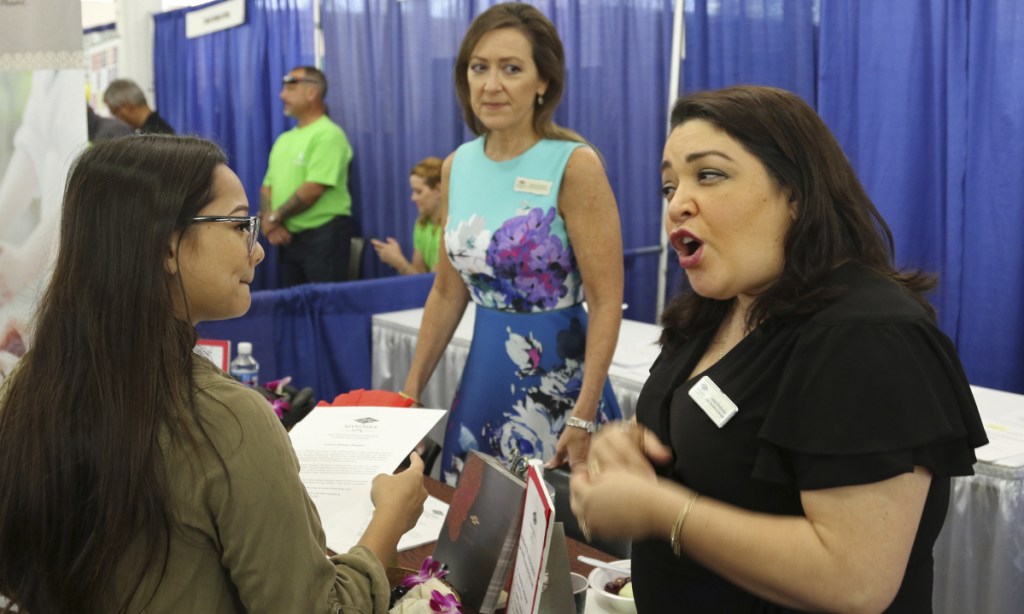HONOLULU — Are there downsides to a low unemployment rate? In Hawaii, which has the United States’ lowest jobless rate at a minuscule 2.1 percent, the answer is yes.
Employers are frustrated by their inability to find workers. And unfilled jobs may be slowing the state’s economic growth.
Hawaii’s experience serves as a cautionary tale for the nation as a whole: Low unemployment can mask underlying problems. Nationwide, the jobless rate is at a 17-year low of 4.1 percent, and economists forecast it could drop another half-point by next year. That would bring the rate to a half-century low.
U.S. employers are already complaining about their struggles to find qualified employees. The number of open jobs nationwide reached the highest level on record in January.
Like the rest of the country, Hawaii has an aging population, and its unemployment rate has been held down in part by retiring baby boomers.
The state also has unique challenges, such as an economy long dominated by tourism. Many of Hawaii’s available jobs are in the service sector and don’t pay enough to cover the state’s high housing costs. And economists say Hawaii’s ongoing economic sluggishness could make it harder for the state to pay its public pension obligations in the future, and fund highways and other expensive infrastructure.
People are moving away from Hawaii even as employers here clamor for workers.
Last year, the state suffered a net loss of more than 1,000 people. On Oahu, home to Honolulu and major military installations like Pearl Harbor, the population declined an average of 11 people per day. The median price of an Oahu home tops $770,000.
The demand for labor is driven by a tourism surge that brought a record 9.4 million visitors to the islands last year. Strong hiring and income gains in the Western U.S. mean more Americans can make the trip. And Japan and Canada, where most of the state’s overseas visitors come from, also are experiencing solid growth.
That’s led to an increase in low-paying hotel and restaurant jobs, which accounted for 60 percent of Hawaii’s job growth in 2017, according to data compiled by Moody’s Analytics. Hotels and restaurants employ about one of every five workers in the state, double the proportion in the rest of the U.S.
Adam Kamins, a senior economist at Moody’s Analytics, says the state has had little success in luring better-paying tech jobs from western states such as California or Washington, because of high housing and business costs. Tech firms are instead moving to cheaper states such as Utah, Colorado and Idaho.
An economy with an unemployment rate as low as Hawaii’s should be growing about 3 percent a year, said Eugene Tian, the state’s chief economist. Instead, it’s growing at about 1.5 percent.
“We don’t have enough housing. We don’t have enough trained labor. That’s limiting the growth,” Tian said. “They are connected.”
Send questions/comments to the editors.



Success. Please wait for the page to reload. If the page does not reload within 5 seconds, please refresh the page.
Enter your email and password to access comments.
Hi, to comment on stories you must . This profile is in addition to your subscription and website login.
Already have a commenting profile? .
Invalid username/password.
Please check your email to confirm and complete your registration.
Only subscribers are eligible to post comments. Please subscribe or login first for digital access. Here’s why.
Use the form below to reset your password. When you've submitted your account email, we will send an email with a reset code.